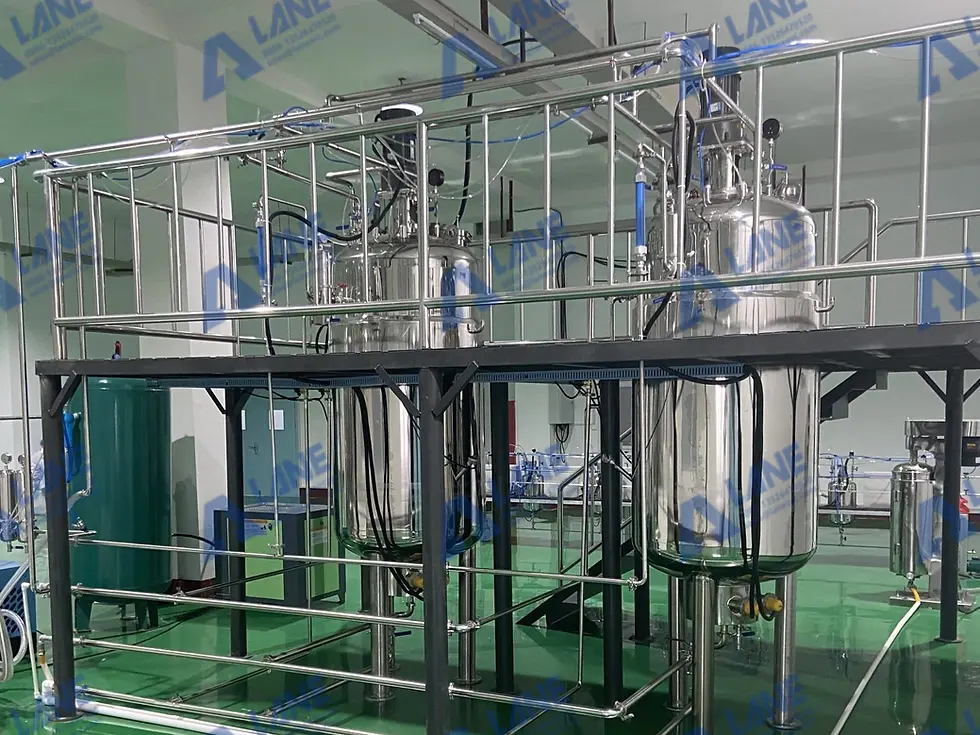How Amino Acid Liquid Fertilizer Manufacturing Equipment Transforms Modern Agriculture
- Nancy Ju
- Aug 21
- 4 min read
Amino acid liquid fertilizer manufacturing equipment is rapidly becoming one of the most discussed solutions in modern agriculture. Farmers and fertilizer producers are searching for ways to improve soil health, increase crop yields, and reduce dependency on chemical fertilizers. Amino acid liquid fertilizers stand out because they are bio-based, highly absorbable, and environmentally friendly, providing nutrition at the cellular level for crops.
However, the efficiency and quality of such fertilizers are largely dependent on the production equipment used. A reliable production line can ensure a stable formula, consistent amino acid concentration, and scalable output. Companies like LANE have developed advanced systems that combine technology, customization, and services to help agricultural enterprises meet the growing global demand.
What Makes Amino Acid Liquid Fertilizer Different?
Unlike traditional chemical fertilizers, amino acid liquid fertilizers supply plants with essential amino acids directly. These amino acids act as:
Nutrient carriers, helping plants absorb nitrogen, phosphorus, and potassium more effectively.
Stress protectors, improving tolerance to drought, salinity, and pests.
Growth enhancers, stimulating enzymes and proteins essential for plant development.
Because of their biological nature, amino acid fertilizers require specialized equipment to extract, refine, and stabilize their composition for large-scale farming use.

Core Processes in Amino Acid Liquid Fertilizer Manufacturing
The production of amino acid liquid fertilizers typically involves multiple stages. A well-designed amino acid liquid fertilizer manufacturing equipment line ensures each process is precise and efficient.
1. Raw Material Preparation
Protein-rich sources such as soybean meal, fish waste, or animal by-products are selected.
Pre-processing removes impurities and ensures uniform feedstock.
2. Hydrolysis
Enzymatic or acid hydrolysis breaks down proteins into free amino acids.
Stainless steel hydrolysis tanks maintain controlled temperature and pH to maximize yield.
3. Filtration and Purification
The mixture passes through dual filters to remove residues.
Ensures clarity and stability of the final liquid product.
4. Formulation and Mixing
Additional nutrients like micronutrients (Zn, Fe, Mn, Cu) are blended.
Stainless steel mixing tanks are used to keep solutions homogenous.
5. Storage and Maturation
The solution is transferred into stainless steel storage tanks for controlled maturation.
This enhances product stability and shelf life.
6. Packaging
Automatic filling and packing machines ensure accurate dosing and packaging.
Options range from small bottles for retail markets to bulk containers for large-scale farms.

Key Equipment in Amino Acid Liquid Fertilizer Manufacturing
Process Stage | Equipment Used | Function |
Hydrolysis | Stainless steel hydrolysis tank | Break down proteins into amino acids |
Filtration | Dual filter | Remove impurities, ensure product clarity |
Mixing | Stainless steel mixing tank | Homogenize nutrients and amino acids |
Storage | Stainless steel storage tank | Preserve stability before packaging |
Packaging | Automatic filling and packing machine | Efficient, accurate, and scalable output |
Advantages of LANE’s Amino Acid Liquid Fertilizer Manufacturing Equipment
LANE is not only an equipment supplier but also a partner for long-term agricultural success. Choosing LANE means:
Tailored Solutions – Equipment layouts and configurations are designed based on raw materials, capacity requirements, and market needs.
Expert Engineering Support – LANE provides on-site installation, commissioning, and staff training.
Reliable After-sales Service – Dedicated teams ensure maintenance support and spare parts availability.
Proven Experience – Decades of international cooperation across Asia, Africa, and Latin America give LANE unique insights into different farming practices.
Case Studies: Global Applications
Middle East: Supporting Agriculture in Arid Environments
A farm network in Jordan faced the challenge of farming under water-scarce and nutrient-poor conditions. Conventional fertilizers were expensive and often ineffective in such soils. The farmers adopted LANE’s amino acid liquid fertilizer production system, using animal by-products and imported soybean meal as raw materials.
The introduction of amino acid liquid fertilizers changed their production strategy. Because amino acids improve plants’ ability to withstand heat and drought stress, crops like tomatoes and cucumbers adapted better to the desert climate. Farmers reported:
20% higher crop yields under the same irrigation regime.
Better fruit uniformity, which increased export value.
Reduced reliance on chemical fertilizers, saving operational costs.
This project highlighted how amino acid fertilizers can play a vital role in climate resilience for agriculture.

Frequently Asked Questions (FAQ)
1. What raw materials can be used in amino acid liquid fertilizer manufacturing equipment?
The most common raw materials include soybean meal, fish by-products, animal residues, and crop waste that contain proteins. These protein-rich materials undergo enzymatic hydrolysis in the equipment, releasing free amino acids that plants can easily absorb. The versatility of raw material options makes the system adaptable to local agricultural or industrial by-products.
2. How does amino acid liquid fertilizer benefit crops compared to traditional fertilizers?
Unlike chemical fertilizers that mainly provide NPK nutrients, amino acid liquid fertilizers deliver bioactive compounds that directly support plant metabolism, stress tolerance, and nutrient uptake. This results in healthier root systems, stronger growth under drought or heat, and improved crop yield and quality.
3. Can LANE’s amino acid liquid fertilizer production line be customized for different production capacities?
Yes. LANE specializes in customization based on the customer’s scale of operation. From small farms needing a compact system to large agribusinesses requiring automated lines with mixing, filtering, storage, and filling functions, LANE’s engineers design equipment that meets exact needs.
The growing demand for sustainable and efficient fertilizers has positioned amino acid liquid fertilizer manufacturing equipment as a cornerstone of modern agriculture. By enabling efficient hydrolysis, purification, and blending, such equipment ensures that farmers receive consistent, high-quality fertilizers.
With LANE’s expertise in customized solutions, global project experience, and comprehensive support, fertilizer producers worldwide can confidently invest in production lines that improve agricultural productivity while promoting sustainability.
Email: sales@lanesvc.com
Contact number: +86 13526470520
Whatsapp: +86 13526470520






Comments